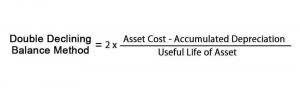
Liabilities are unsettled obligations to third parties that represent a future cash outflow, or more specifically, the external financing used by a company to fund the purchase and maintenance of assets. Unearned or deferred revenue refers to a form of advanced payment given by consumers for a product or service not yet received. For example, say you are pre-saving a song or a video game.
What is a Liability Account? – Definition
It might signal weak financial stability if a company has had more expenses than revenues for the last three years because it’s been losing money for https://x.com/BooksTimeInc those years. Assets are what a company owns or something that’s owed to the company. They include tangible items such as buildings, machinery, and equipment as well as intangibles such as accounts receivable, interest owed, patents, or intellectual property. Sandra Habiger is a Chartered Professional Accountant with a Bachelor’s Degree in Business Administration from the University of Washington. Sandra’s areas of focus include advising real estate agents, brokers, and investors.
- When using accrual accounting, you’ll likely run into times when you need to record accrued expenses.
- They can also include loan interest, salaries and wages payable, and funds owed to suppliers or utility bills.
- You compare these against your total assets to find what percentage of your assets will be used to pay those debts.
- The portion of the vehicle that you’ve already paid for is an asset.
Current (Near-Term) Liabilities

They are contingent, meaning they hinge on a certain outcome panning out. We consider something a contingent liability, if a) the value is assessable, and b) the outcome is likely. These are due for settlement in more than one year, and almost always involve long-term borrowings. Another popular calculation that potential investors or lenders might perform while figuring out the health of your business is the debt to capital ratio.

Types of liabilities on a balance sheet
Liabilities can further be classified into several distinct types. Our popular accounting course is designed for those with no accounting background https://www.bookstime.com/ or those seeking a refresher. Contingent Liabilities are obligations that may or may not occur. These obligations may arise due to specific situations and conditions.

What Are the Different Types of Liabilities in Accounting?
It helps to categorize all transactions, working as a simple, at-a-glance reference point. Similar to a chart of accounts, an accounting template can give you a clear picture of your business’s financial information at a glance. Utilizing accounting tools like these will ensure a better workflow, helping you grow your company.

These include your utilities, rent, other manufacturing costs, advertising and marketing, and the cost of goods sold. The most common would be net 15 (within 15 days) or net 30 (within 30 days). Going past the due dates leads to them becoming liabilities.
- It isn’t uncommon for business owners to take out loans to put up shop and fund operations.
- Liabilities are listed on a company’s balance sheet and expenses are listed on a company’s income statement.
- TCS is in the field of IT and a global leader in the field of IT.
- Small businesses that aren’t required to comply with the US GAAP may opt not to consider contingencies in financial reporting.
- As your business grows and you take on more debt, it becomes even more important to understand the difference between current and long-term liabilities in order to ensure that they’re recorded properly.
Type 1: Accounts payable
Learn financial statement modeling, DCF, M&A, LBO, Comps and Excel shortcuts. This ratio can tell you what percent of your operations are funded by liabilities versus equity. Essentially, if you are indebted to someone and liabilities accounts list are obliged to pay them back for a service or good they provided, it’s a liability. Examples of this can be purchasing equipment or furniture on a payment plan or paying for raw materials on credit. Liabilities refer to short-term and long-term obligations of a company.
